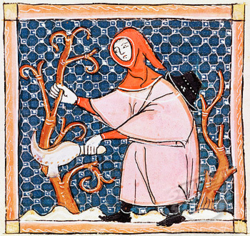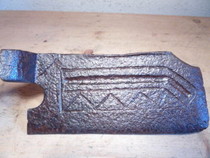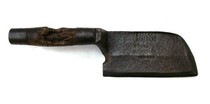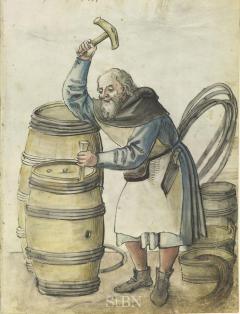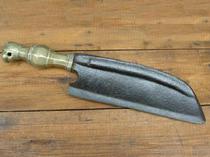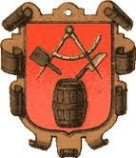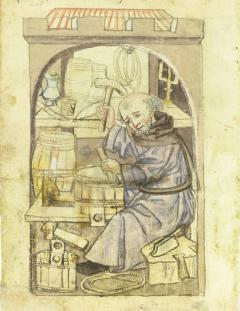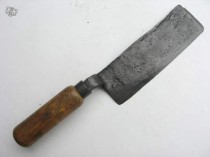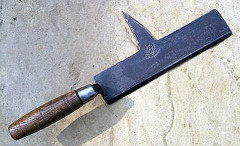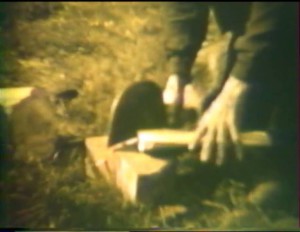Cochoirs or cauchoir(e)s
The 'cochoir', also spelled 'cauchoir(e)', is a specialised form of billhook used in the 'tonnelleries' or cooperages of France. It is not used in Britain, but may have been in the distant past. It is probably common elsewhere in Europe...
In Diderot's Encylopædie it is the only cutting tool shown being used for cutting barrel staves, although a later plate showing tools also illustrates a 'doloire' or side axe.
The closest British tool in appearance and, to a certain extent, function is the slater's axe (zax or saxe) - both may have some common ancestry.... or it may be a case of parallel development - i.e the shape developed as the most suitable for the task.
A brief study of a little known type of billhook used in the cooperages of France
The cochoir or cauchoire.pdf
Adobe Acrobat document [1.8 MB]
A wappen or coat of arms from a German cooperage (böttcherei or kuferei) showing a tool similar to the French cochoir at the right.
The billhooks from northern France, Belgium and Holland often have straight blades, increasing their usefulness in a range of trades, such as roughing the shape of the wooden spoons made in the villages of Créquy and Fruges in the Pas de Calais up to WW2.
Here is a still image from the short video of spoon making in Fruges circa 1930. It shows the louchier (spoon-maker) using a serpe (billhook) to rough out the blank used to make the spoon.
